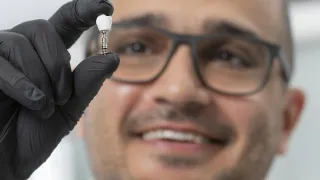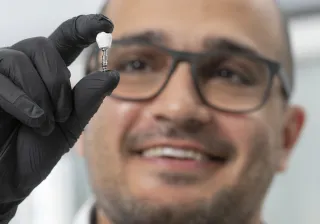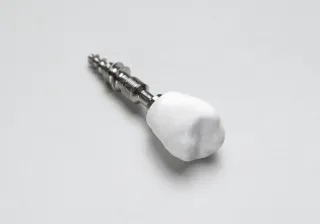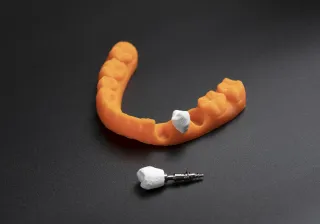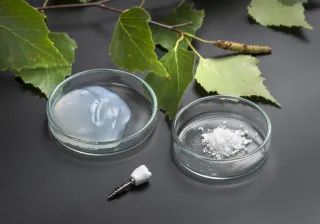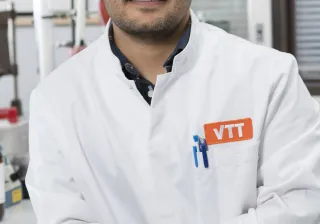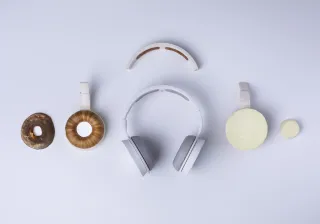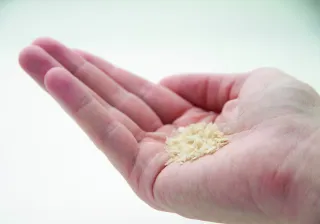A research group from VTT in collaboration with Nanyang Technological University has developed a sustainable multiphase nanocomposite mimicking the peachick mantis shrimp club and used it to manufacture new dental implant crowns in the laboratory. This new bioinspired material is an intermixing of birch-cellulose and a set of genetically engineered proteins. The outcome is a material that is stronger, tougher, and substantially lighter than man-made technical ceramics. It has a high potential of becoming a next-generation material in impact-resistant implants, sports equipment, body armors, exoskeletons for aircraft, electronics, or surface coatings for windshields, for example.
Nature provides unique insights into design strategies evolved by living organisms to construct robust materials. In this case, the research group was able to create a new impact-resistant material inspired by the dactyl club of the mantis shrimp. The new material could be used in applications that require withstanding repetitive high strain-rate impacts while maintaining structural integrity. The research results were published on 1 September 2021 in Advanced Materials (DOI: 10.1002/ADMA.202102658).
Mimicking mantis shrimp’s club
A research group at VTT’s succeeded in designing and producing a mineralized biocomposite exhibiting high strength, stiffness, and fracture toughness that resembles the architectural design of the dactyl club of the mantis shrimp.
“These mesmerizing shrimps are one of nature’s deadliest killing machines. In relation to their small size, they pack the strongest punch in the animal kingdom. They smash their prey by throwing a pair of hammer-like raptorial appendages with a tremendous speed and force greater than rifle bullets during close-range hunting,”, explains Dr. Pezhman Mohammadi, Research Scientist at VTT. “The mantis shrimp’s primary sources of food are hard-shell marine organisms, such as mollusks. To get to the soft, nutritious part they obliterate straight through these highly mineralized exoskeletons.”
Earlier studies have shown that the club is a multiphase hierarchically ordered nanocomposite with graded mechanical properties. “The club has a soft interior layer providing energy dissipation and a stiff, hard, and impact-resistant exterior layer. Together, the layers enhance the overall damage tolerance of the club. Both layers have similar building blocks, but in different relative content, polymorphic form, and organization. The main building block is helicoidally ordered chitin nano-fibrils that are glued together by a protein-rich matrix,” tells Mohammadi.
Combining cellulose nanocrystals and proteins
The research group replicated this structure by using similar building blocks and processing conditions. They assembled a new composite, which consists of cellulose nanocrystals and two types of genetically engineered proteins. One protein was designed to increase the interfacial strength of the material and the other to mediate nucleation and growth of hydroxyapatite crystals. This new composite was processed into intricate shapes by manufacturing it into a dental implant crown with periodic patterns of micro-reinforcement orientation, and a bilayer architecture similar to human teeth. With further investigation, the proteins could be engineered to provide new characteristics to the material.
For future applications, the scalability and processing conditions of the material need further development.
The research team included experts in synthetic biology, protein engineering, material science and soft-matter physics. The two and a half year project was financially supported by VTT and the Jenny and Antti Wihuri Foundation within the Centre for Young Synbio Scientists (CYSS) programme led by Professor Merja Penttilä.
MEDIA MATERIAL
Photo ref: VTT

